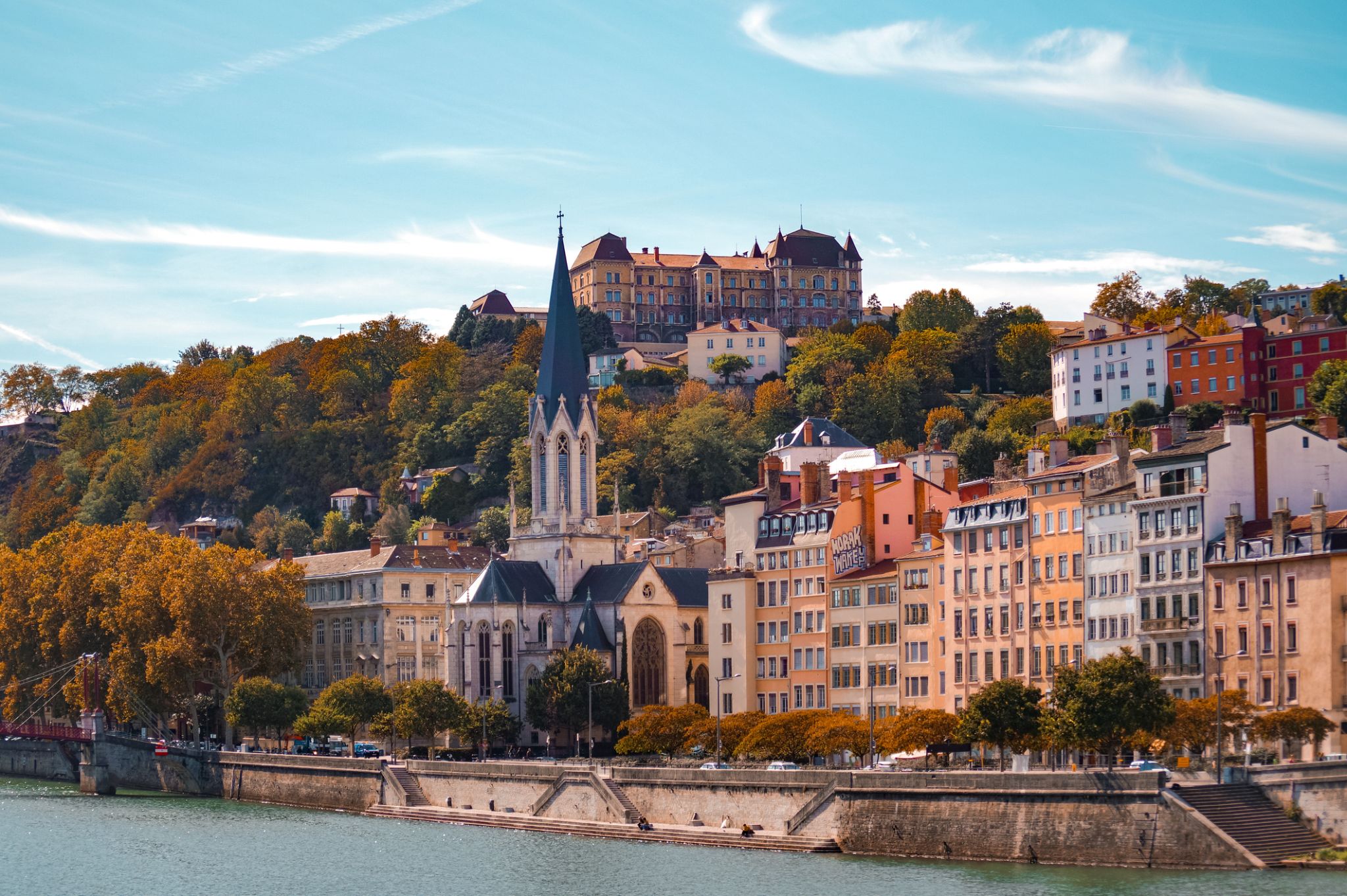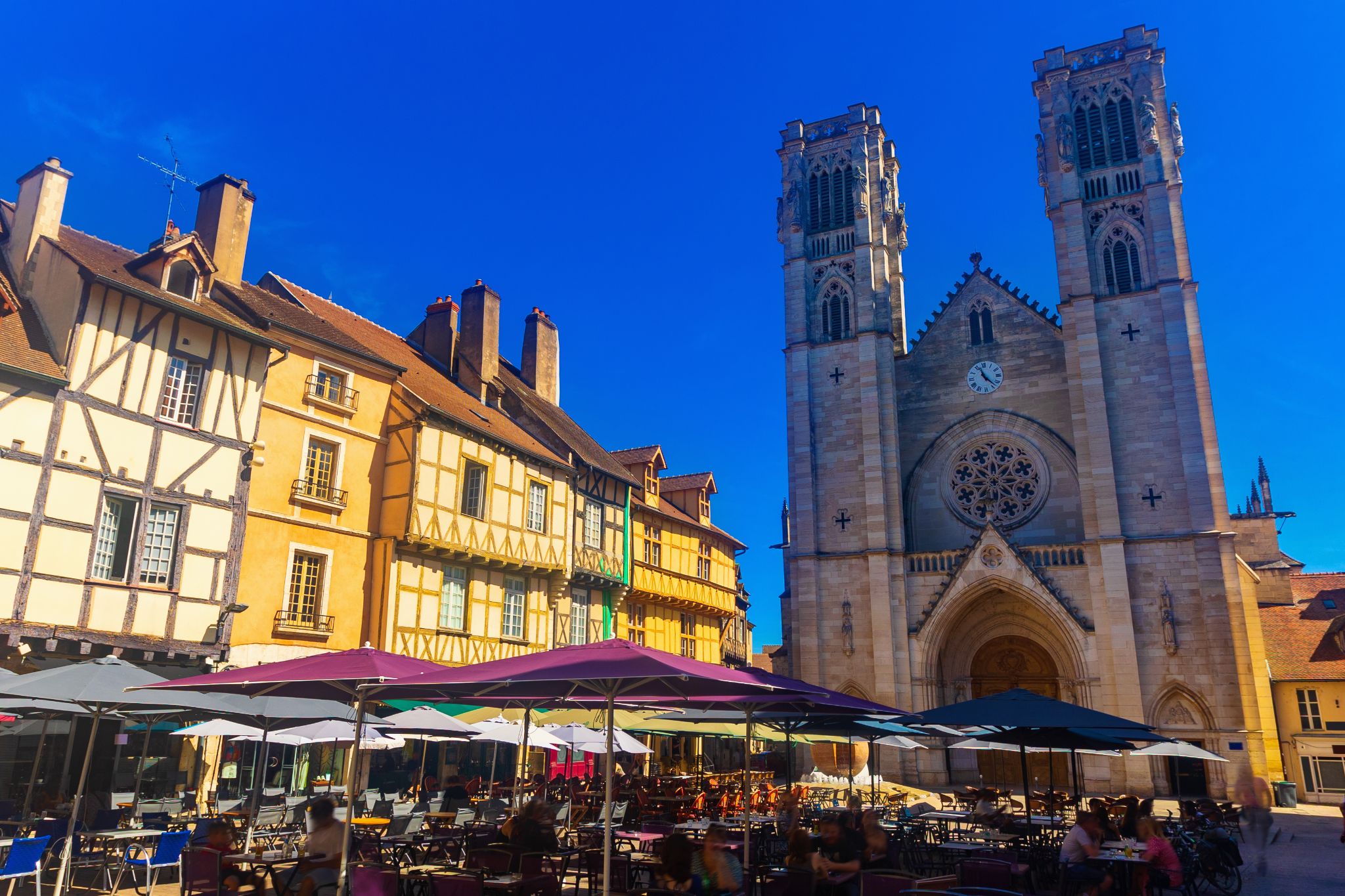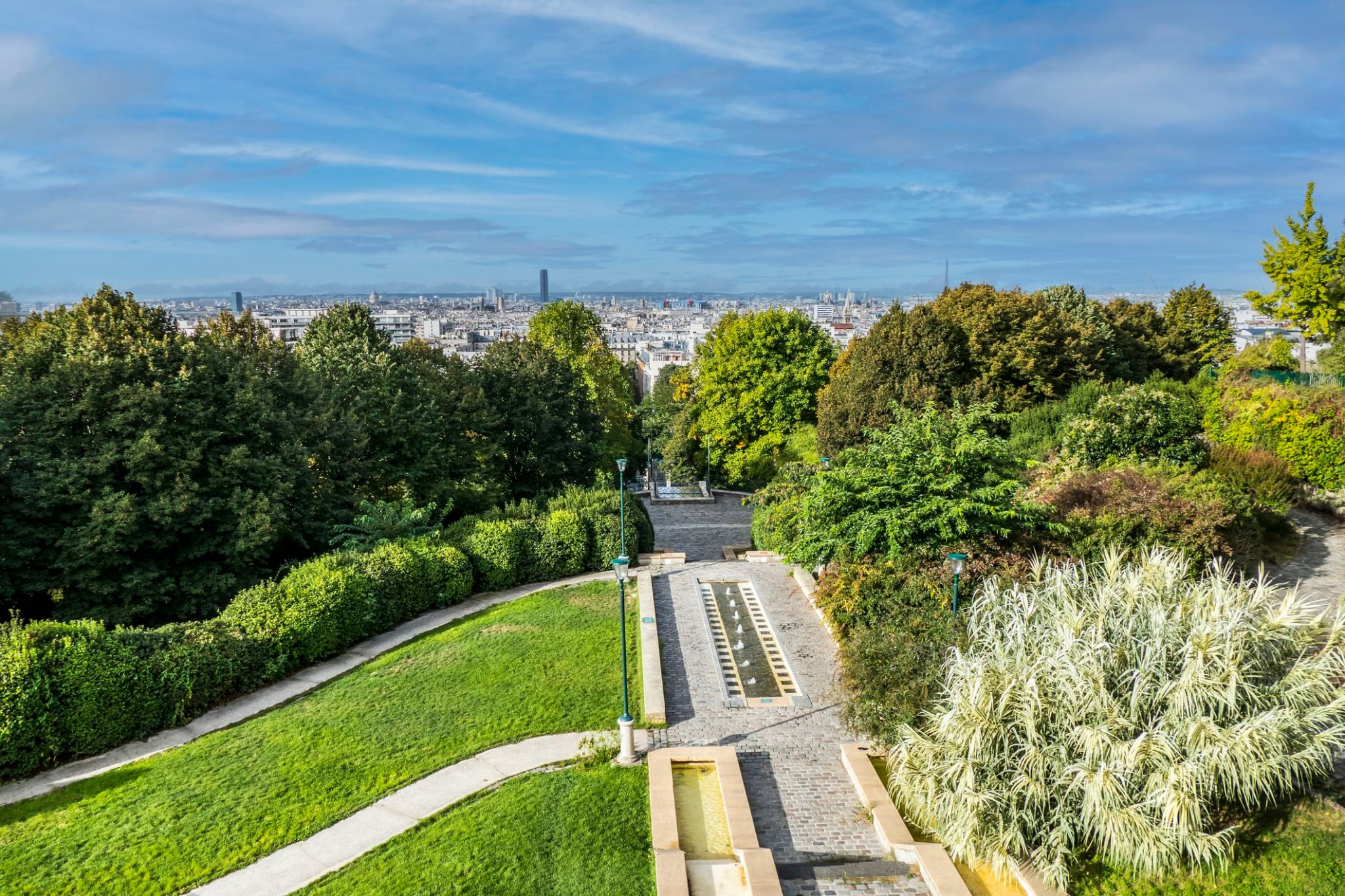

| Cruise Region : Europe |
| Company : Croisi Europe |
| Ship : MS Rhone Princess |
| Journey Start : Sun 15 Nov 2026 |
| Journey End : Thu 19 Nov 2026 |
| Count Nights : 4 nights |
| Day | Date | Port | Arrival | Departure |
|---|---|---|---|---|
| 1 | 15.11 Sun | Lyon / France | 18:00 | 19:00 |
| 2 | 16.11 Mon | Chalon-sur-Saône / France | 05:30 | |
| 3 | 17.11 Tue | Chalon-sur-Saône / France | 03:00 | |
| 3 | 17.11 Tue | Mâcon / France | 08:00 | |
| 4 | 18.11 Wed | Mâcon / France | 11:00 | |
| 4 | 18.11 Wed | Belleville / France | 13:00 | |
| 5 | 19.11 Thu | Belleville / France | 02:00 | |
| 5 | 19.11 Thu | Lyon / France | 07:00 | 09:00 |
All inclusive on board
THE CROISIEUROPE DIFFERENCE
All meals included - DRINKS INCLUDED with meals and at the bar
Refined French cuisine - Gala dinner and evening - Welcome cocktail
Free Wi-Fi onboard
Headsets are included for excursions
Official welcome from the captain and crew
Onboard activities
Travel assistance and repatriation insurance
All port fees included

Lyon is the third-largest city and second-largest urban area of France. It is located in the country's east-central part at the confluence of the rivers Rhône and Saône,about 470 km (292 mi) south from Paris, 320 km (199 mi) north from Marseille and 56 km (35 mi) northeast from Saint-Étienne. Inhabitants of the city are called Lyonnais.
Lyon had a population of 513,275 in 2015. It is the capital of the Metropolis of Lyon and the region of Auvergne-Rhône-Alpes. The Lyon metropolitan area had a population of 2,265,375 in 2014, the second-largest urban area in France. The city is known for its cuisine and gastronomy, and historical and architectural landmarks; part of it is a registered as a UNESCO World Heritage site. Lyon was historically an important area for the production and weaving of silk. Lyon played a significant role in the history of cinema: it is where Auguste and Louis Lumièreinvented the cinematograph. It is also known for its light festival, the Fête des Lumières, which begins every 8 December and lasts for four days, earning Lyon the title of Capital of Lights.
Economically, Lyon is a major centre for banking, as well as for the chemical, pharmaceutical, and biotech industries. The city contains a significant software industry with a particular focus on video games, and in recent years has fostered a growing local start-up sector. Lyon hosts the international headquarters of Interpol, the International Agency for Research on Cancer and Euronews. It was ranked 19th globally and second in France for innovation in 2014. It ranked second in France and 39th globally in Mercer's 2015 liveability rankings.

Chalon-sur-Saône is a commune in the Saône-et-Loire department in the region of Bourgogne-Franche-Comté in eastern France.
It is a sub-prefecture of the department. It is the largest city in the department; however, the department capital is the smaller city of Mâcon.
Chalon-sur-Saône lies in the south of the Bourgogne-Franche-Comté region of France. It is located on the Saône river, and was once a busy port, acting as a distribution point for local wines which were sent up and down the Saône river and the Canal du Centre, opened in 1792.
Though the site (ancient Cabillonum) was a capital of the Aedui and objects of La Tène culture have been retrieved from the bed of the river here, the first mention of Cavillonum is found in Commentarii de Bello Gallico (VII, chs. 42 and 90). The Roman city already served as a river port and hub of road communications, of the Via Agrippa and side routes. In 354 AD the Roman Emperor, Constantius II stationed the Roman 7th Army in Chalon (then called Cabyllona) for an invasion against the brother kings, Gundomadus and Vadomarius of the Alamanni. However, not having received supplies, the Roman troops revolted, and were pacified by the grand chamberlain Eusebiuswith money. In Late Antiquity the city had dwindled so much that a wall round it encircled fifteen hectares.
Saint Marcellus of Chalons (Saint Marcel) is said to have been martyred here in 179 AD. Chalon became one of the de facto capitals of the kingdom of Burgundy under Guntram, king from 561 to 592, who died here. Guntram also promoted the cult of Saint Marcellus. The bishopric of Chalon-sur-Saône, a suffragan of the Archdiocese of Lyon, was established here in the same century, and a Church Council was held here from 644–655. The see was merged into the diocese of Autunshortly after the French Revolution.
Chalon in the 19th century is best known as the birthplace of photography. Its most famous resident, Nicéphore Niépcealso has a lycée (secondary school) named after him. There is a museum which contains some early photography relics, located on the Quai des Messageries in the town, containing more than two million photographs and many old artefacts such as cameras and other equipment for old and modern photography. Also on display are Niépce's 1807 Pyréolophore which is probably the world's first internal combustion engine, plus his 1818 implementation of a dandy horse, for which he coined the word vélocipède.
Another famous resident is Dominique Vivant Denon (1747–1825) who was involved in the creation of the Louvre museum, converting the former royal palace into a museum after the French Revolution

Chalon-sur-Saône is a commune in the Saône-et-Loire department in the region of Bourgogne-Franche-Comté in eastern France.
It is a sub-prefecture of the department. It is the largest city in the department; however, the department capital is the smaller city of Mâcon.
Chalon-sur-Saône lies in the south of the Bourgogne-Franche-Comté region of France. It is located on the Saône river, and was once a busy port, acting as a distribution point for local wines which were sent up and down the Saône river and the Canal du Centre, opened in 1792.
Though the site (ancient Cabillonum) was a capital of the Aedui and objects of La Tène culture have been retrieved from the bed of the river here, the first mention of Cavillonum is found in Commentarii de Bello Gallico (VII, chs. 42 and 90). The Roman city already served as a river port and hub of road communications, of the Via Agrippa and side routes. In 354 AD the Roman Emperor, Constantius II stationed the Roman 7th Army in Chalon (then called Cabyllona) for an invasion against the brother kings, Gundomadus and Vadomarius of the Alamanni. However, not having received supplies, the Roman troops revolted, and were pacified by the grand chamberlain Eusebiuswith money. In Late Antiquity the city had dwindled so much that a wall round it encircled fifteen hectares.
Saint Marcellus of Chalons (Saint Marcel) is said to have been martyred here in 179 AD. Chalon became one of the de facto capitals of the kingdom of Burgundy under Guntram, king from 561 to 592, who died here. Guntram also promoted the cult of Saint Marcellus. The bishopric of Chalon-sur-Saône, a suffragan of the Archdiocese of Lyon, was established here in the same century, and a Church Council was held here from 644–655. The see was merged into the diocese of Autunshortly after the French Revolution.
Chalon in the 19th century is best known as the birthplace of photography. Its most famous resident, Nicéphore Niépcealso has a lycée (secondary school) named after him. There is a museum which contains some early photography relics, located on the Quai des Messageries in the town, containing more than two million photographs and many old artefacts such as cameras and other equipment for old and modern photography. Also on display are Niépce's 1807 Pyréolophore which is probably the world's first internal combustion engine, plus his 1818 implementation of a dandy horse, for which he coined the word vélocipède.
Another famous resident is Dominique Vivant Denon (1747–1825) who was involved in the creation of the Louvre museum, converting the former royal palace into a museum after the French Revolution

Nestled along the banks of the Saône River, Macon enchants visitors with the charm of southern Burgundy. This French town blends elegant architecture, ancient winemaking traditions, and a relaxed pace of life. Macon is known as the birthplace of poet Alphonse de Lamartine and as a hub for the Mâconnais wine region, especially renowned for its Chardonnay.
A stroll through the old town reveals blooming balconies, cozy cafés, and historic landmarks like the Church of Saint-Pierre and a 15th-century timber-framed house. Nature lovers and gourmets alike can explore wine trails or enjoy sweeping views from the Saint-Laurent Bridge. Macon is the perfect place to experience the charm of France without the bustle of big cities.

Nestled along the banks of the Saône River, Macon enchants visitors with the charm of southern Burgundy. This French town blends elegant architecture, ancient winemaking traditions, and a relaxed pace of life. Macon is known as the birthplace of poet Alphonse de Lamartine and as a hub for the Mâconnais wine region, especially renowned for its Chardonnay.
A stroll through the old town reveals blooming balconies, cozy cafés, and historic landmarks like the Church of Saint-Pierre and a 15th-century timber-framed house. Nature lovers and gourmets alike can explore wine trails or enjoy sweeping views from the Saint-Laurent Bridge. Macon is the perfect place to experience the charm of France without the bustle of big cities.

Through its vibrant blend of cultures and traditions, Belleville offers tourists a unique sense of the true Parisian spirit. This district attracts with its atmosphere, where ancient streets intertwine with modern cafes and markets, and numerous restaurants offer dishes from all around the world. Strolling through green parks, such as Belleville Park, provides a chance to escape the city's hustle and bustle, enjoying nature and beautiful views of Paris.
Belleville is also a hub of cultural life, where art and creativity merge with history. Street artists, cultural events, and intriguing exhibitions give the district a special vibe, reflecting the diversity and energy of the city. This place is perfect for those who want to immerse themselves in the atmosphere of true Paris, away from the usual tourist routes.

Through its vibrant blend of cultures and traditions, Belleville offers tourists a unique sense of the true Parisian spirit. This district attracts with its atmosphere, where ancient streets intertwine with modern cafes and markets, and numerous restaurants offer dishes from all around the world. Strolling through green parks, such as Belleville Park, provides a chance to escape the city's hustle and bustle, enjoying nature and beautiful views of Paris.
Belleville is also a hub of cultural life, where art and creativity merge with history. Street artists, cultural events, and intriguing exhibitions give the district a special vibe, reflecting the diversity and energy of the city. This place is perfect for those who want to immerse themselves in the atmosphere of true Paris, away from the usual tourist routes.

Lyon is the third-largest city and second-largest urban area of France. It is located in the country's east-central part at the confluence of the rivers Rhône and Saône,about 470 km (292 mi) south from Paris, 320 km (199 mi) north from Marseille and 56 km (35 mi) northeast from Saint-Étienne. Inhabitants of the city are called Lyonnais.
Lyon had a population of 513,275 in 2015. It is the capital of the Metropolis of Lyon and the region of Auvergne-Rhône-Alpes. The Lyon metropolitan area had a population of 2,265,375 in 2014, the second-largest urban area in France. The city is known for its cuisine and gastronomy, and historical and architectural landmarks; part of it is a registered as a UNESCO World Heritage site. Lyon was historically an important area for the production and weaving of silk. Lyon played a significant role in the history of cinema: it is where Auguste and Louis Lumièreinvented the cinematograph. It is also known for its light festival, the Fête des Lumières, which begins every 8 December and lasts for four days, earning Lyon the title of Capital of Lights.
Economically, Lyon is a major centre for banking, as well as for the chemical, pharmaceutical, and biotech industries. The city contains a significant software industry with a particular focus on video games, and in recent years has fostered a growing local start-up sector. Lyon hosts the international headquarters of Interpol, the International Agency for Research on Cancer and Euronews. It was ranked 19th globally and second in France for innovation in 2014. It ranked second in France and 39th globally in Mercer's 2015 liveability rankings.